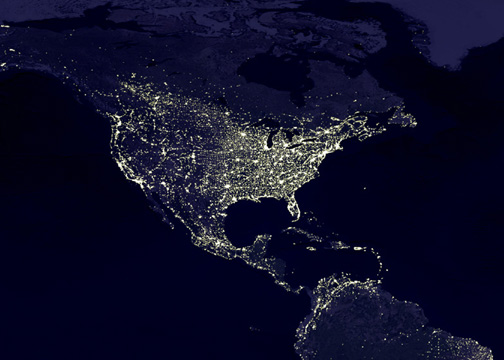
This composite night time photo taken by the DMSP satellites shows how prevalent light pollution has become.

Light Pollution
Like most astronomy clubs, The Kiski Astronomers are concerned about Light Pollution.
Can you see through the street light’s
bright glare?
With light pollution still on the rise,viewing the stars and the constellations is
becoming more difficult. Many city dwellers have never seen a starry, night
sky. As the population spreads into the rural areas, so does the light pollution.
Light pollution is all over the world.


Cities and companies are using harsh and wasteful lighting for decorating and
advertising purposes, not taking into consideration the effects on the
environment. Light pollution can be reduced if we work to educate the public to make
informed choices about outdoor lighting. On the local front, guidelines for local
lighting ordinances are being submitted throughout Pennsylvania.
